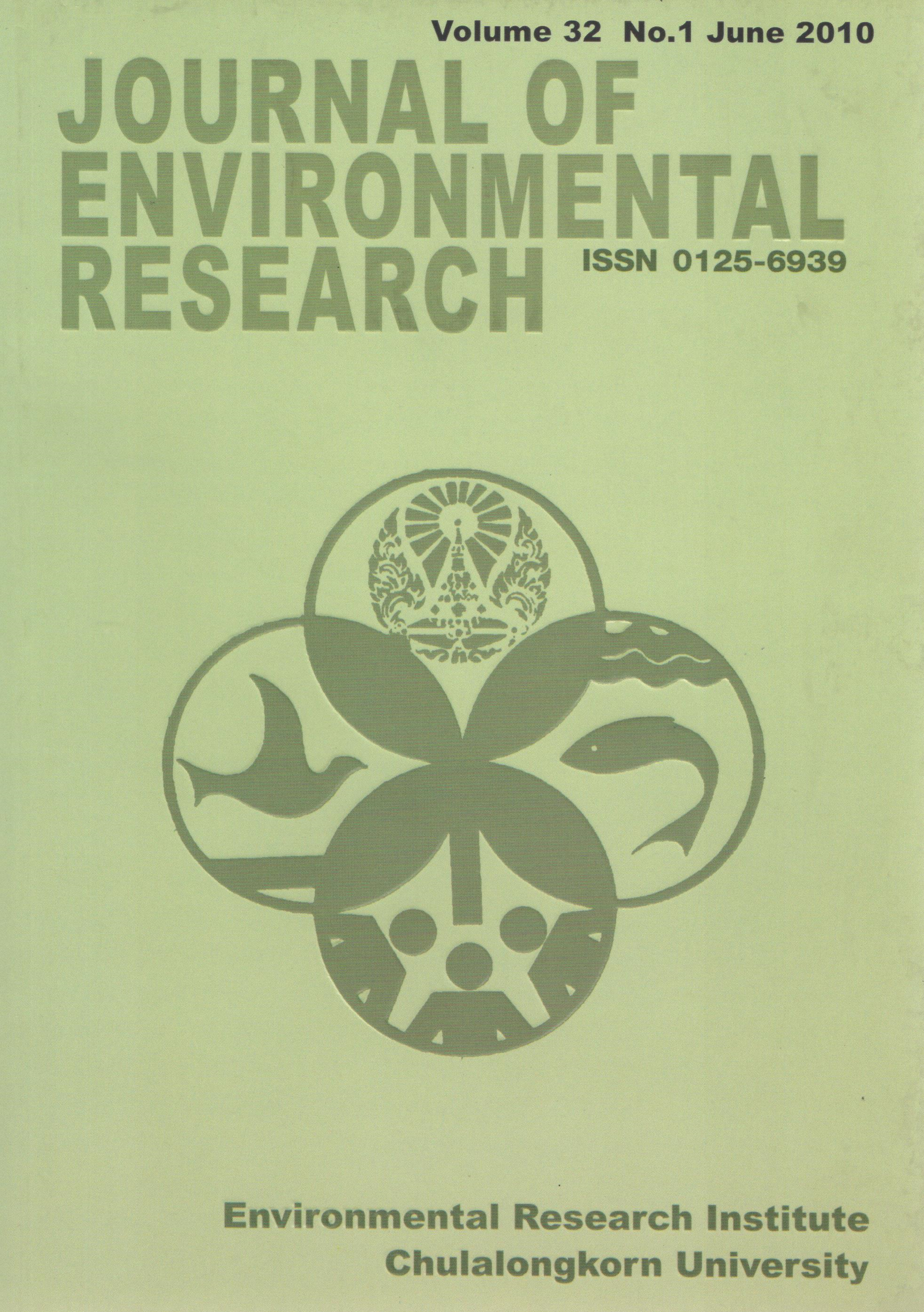Air Pollutant Emissions from the Burning of Incense, Mosquito Coils, and Candles in a Small Experimental Chamber
Main Article Content
Abstract
Combustion of incense, candles, and mosquito coils produces a variety of air pollutants, which may cause adverse health effects. This study was to characterize emissions of particulate matter (PM2.5) and carbon monoxide (CO) from the burning process of three selected types of emitters: incense, candles, and mosquito coils. The experiments were conducted in an aluminum foil-lined wall chamber with a dimension of 1x1x1 m3. Emission rates and emission factors of the test emitters were obtained from fitting time-dependent concentrations of the measured pollutants to a single-compartment mass balance model. The emission rates and emission factors of incense combustion were: PM2.5 154-255 mg h-1 and 65.6-252 mg g-1; CO 378-790 mg h-1 and 242-454 mg g-1. The emission rates and emission factors of mosquito coil combustion were: PM2.5 266-1611 mg h-1 and 112-184 mg g-1; CO 722-837 mg h-1 and 82.4-368 mg g-1. The emission rates and emission factors of candle combustion were: PM2.5 8.80-9.97 mg h-1 and 1.87-2.17 mg g-1; CO 74.7-76.8 mg h-1 and 14.2-18.4 mg g-1. The emission rates and emission factors of PM2.5 and CO for the test incense and mosquito coils were of similar magnitude, but they were approximately 1-2 orders of magnitude higher than those for the test candles. The reason could be due to the fact that incense and mosquito coils are produced purposely to combust incompletely for a smoldering effect. The simulation for the impacts of burning of the combustible household products on occupant exposure shows that the increased ventilation rate of a room is suggested to reduce health risks of customers exposed to the released air pollutants.
Article Details

This work is licensed under a Creative Commons Attribution-NonCommercial 4.0 International License.
Published articles are under the copyright of the Applied Environmental Research effective when the article is accepted for publication thus granting Applied Environmental Research all rights for the work so that both parties may be protected from the consequences of unauthorized use. Partially or totally publication of an article elsewhere is possible only after the consent from the editors.

